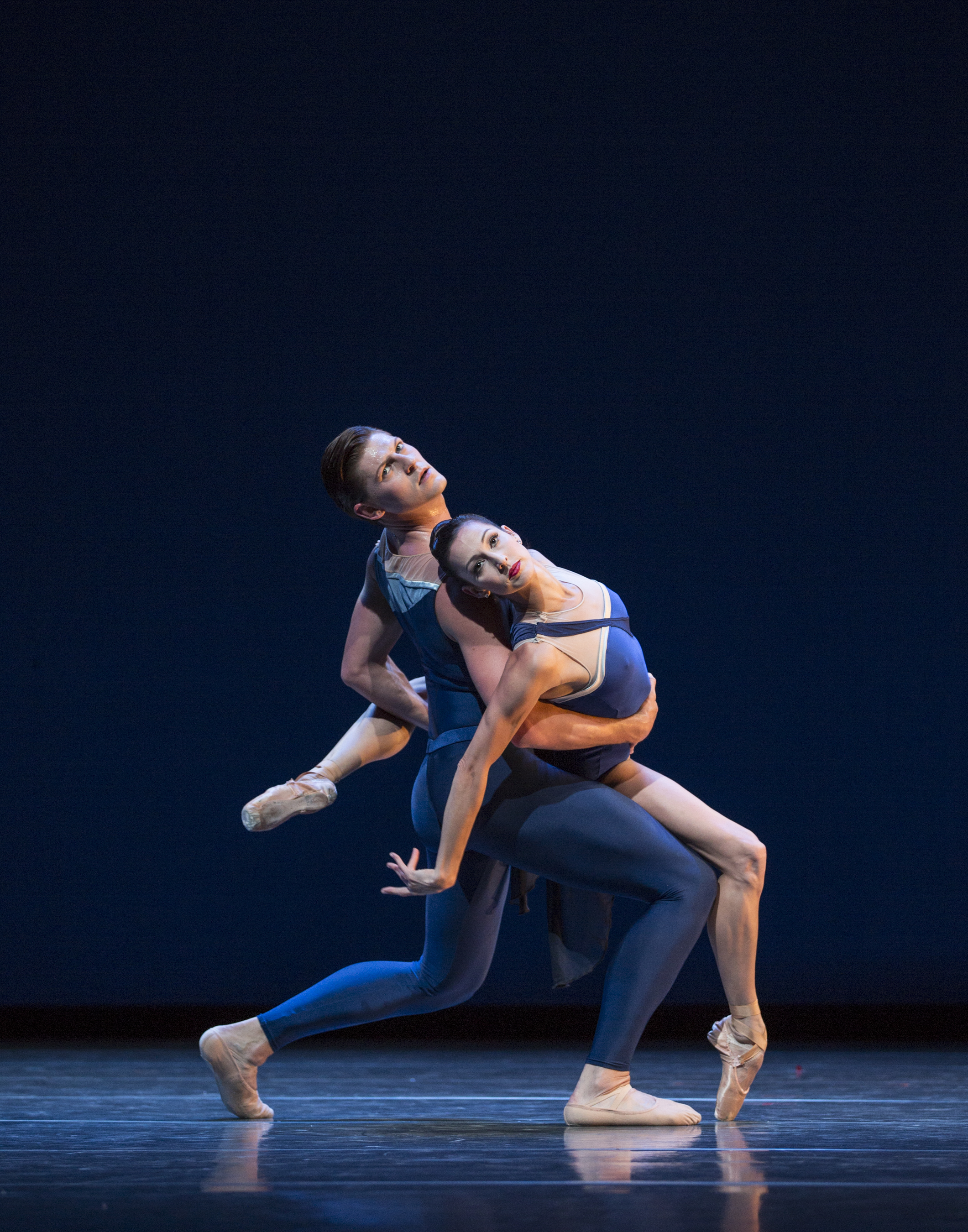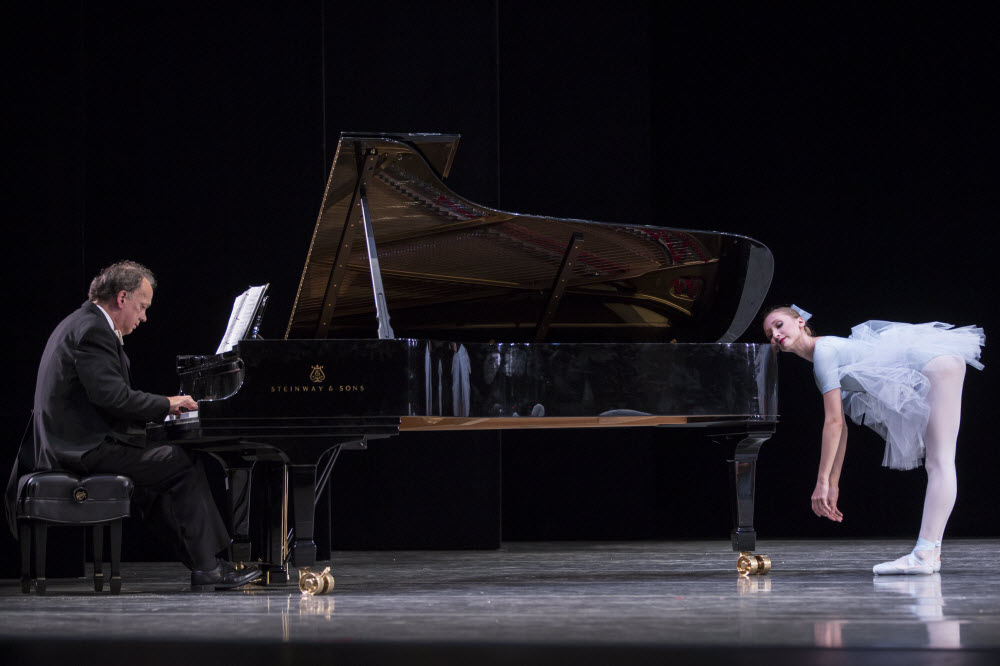Bottom line
Pacific Northwest Ballet's season opener, See the Music, is a mixed-repertory ballet that offers something for everybody – and a chance to explore how broad the world of ballet is. It plays through Sunday, Oct. 4 at McCaw Hall.

Highlights
Conventional wisdom says that story ballets are the way to introduce children to dance. But when I watch my 6-year-old dancing in the living room, she is not telling a story. Children understand movement as self-expression perhaps better than adults do. See the Music, Pacific Northwest Ballet’s first repertory of the new season, presents three short ballets that dance across the line between narrative and abstraction. If you’re not sure which type of ballet your child (or you) would like best, this is the repertory to help you find out.
It begins with “Tide Harmonic,” a Christopher Wheeldon creation set to music by contemporary English composer Joby Talbot. “Tide Harmonic” has no narrative; it explores the energy of water. My 11-year-old daughter was surprised that this did not involve a lot of stringed instruments and “flowy” movement. Instead, it called on the percussive elements of PNB’s live orchestra, creating an almost industrial sound for the first part of the piece that didn’t give way to something softer until the central pas de deux. With no story to focus on, my daughter was free to listen more closely to the music and the way the dancers’ movements related to it. During the intermission she commented, “The music controls everything.”
“Prodigal Son,” George Balanchine’s interpretation of the biblical story, is one of his earliest surviving works. Set to music by Sergei Prokofiev, the narrative of this story ballet is short and simple. Its outline reads like the picture book Where the Wild Things Are: A restless young man runs away and falls in with a wild crowd. Eventually he returns home, where all is forgiven.

The story is simple, but the dancing is not. The forward-thinking Balanchine did not rely on the literal pantomime of classical ballet. Movements are abrupt, often mechanical and sometimes ugly. The Prodigal’s debauchery is not as appealing as Max’s wild rumpus. His drinking companions (referred to backstage as Goons) are menacing, almost grotesque, their movements indicating the compulsion of addiction more than the abandon of celebration. The Siren who leads them seduces the Prodigal in a dance that is rigid and severe, more commanding than sultry. She inspires as much fear as desire. My daughter was reminded of Cyd Charisse in Singin’ in the Rain, but the Siren could just as easily have inspired Anne Rice’s vampire queen.
Worth the price of admission: "The Concert"
I would never recommend paying for tickets to a mixed-rep ballet performance just for one part of the show. Except this time. Even if you’re not sure about the rest of this rep, the final piece, “The Concert (or, The Perils of Everybody),” is worth the price of admission. No matter what style of ballet you prefer, “The Concert” will have you laughing out loud.

Choreograher Jerome Robbins uses Chopin’s immediate and accessible music to almost tell a story. A group of people attend a concert. The concert attendees are immediately recognizable: hipsters, a flighty music lover, a self-important businessman and his prim, judgmental wife. After the pianist dusts off the keys and a seating mix-up is resolved, their bodies settle down and their minds begin to wander. Their daydreams reveal their fears and foibles. A ballerina can’t quite remember her steps, eventually leading the dance into chaos. The businessman fantasizes about killing his wife; it doesn’t work. The music lover remembers finding the perfect hat to express her unique personality, only to see someone else wearing it on the street outside the shop.
By the end, everyone is flitting around in butterfly wings, the pianist is chasing them down with a net and the real-life audience is wiping away tears of laughter.
Parents should know
The three dances in this mixed repertory are very different, providing the opportunity to observe how broad the world of ballet is. The music is the most challenging part of “Tide Harmonic.” Parents can explain that the dancers are moving like water, which sometimes crashes against rocks and sometimes swirls in eddies.
Very young children might find the party scene in “Prodigal Son” a little bit scary, while elementary schoolkids might get confused if they try to be too literal. For “The Concert,” you can explain that when the characters are wearing regular clothes they are people at a concert, and when they are wearing blue bodysuits (still recognizable by their accessories) they are in their imaginations. But even without explanation, “The Concert” will be laugh-out-loud funny for all ages.
Parent tips for preparing
• The program runs approximately two hours and 15 minutes, with two intermissions. “Prodigal Son” is the longest piece, at 41 minutes.
• Booster seats are available at no charge next to the coat check.
• No food is allowed in the auditorium, but you can bring snacks to eat in the lobby during intermission. Prelude, the restaurant inside McCaw Hall, and snack bars on each level are open before the performance and during intermission.
• If one of the pieces isn’t working for your child, you can escape to the lobby to let them play while you watch the performance on one of the wall-mounted TVs.
• Watch videos of “Tide Harmonic” on PNB’s website and find more tips to enjoy the ballet with children.
If you go...
When: October 1, 2 and 3 at 7:30 p.m.; Sunday, October 4 at 1 p.m.
Where: Marion Oliver McCaw Hall, 321 Mercer Street, on the north edge of Seattle Center
Tickets: Buy online; tickets start at $30 and go up to $180. Every family member must have a ticket. There are no bad seats at McCaw Hall – do not hesitate to buy the cheapest seats available. Tickets can be purchased online.
Parking: The Mercer Garage is connected to McCaw Hall by a sky bridge. Rates vary from $10–$20 depending on events at Seattle Center. Other pay lots in the neighborhood have similar pricing. Street parking is limited to 4 hours, and hard to come by. Consider taking the bus – look online to plan your route.











